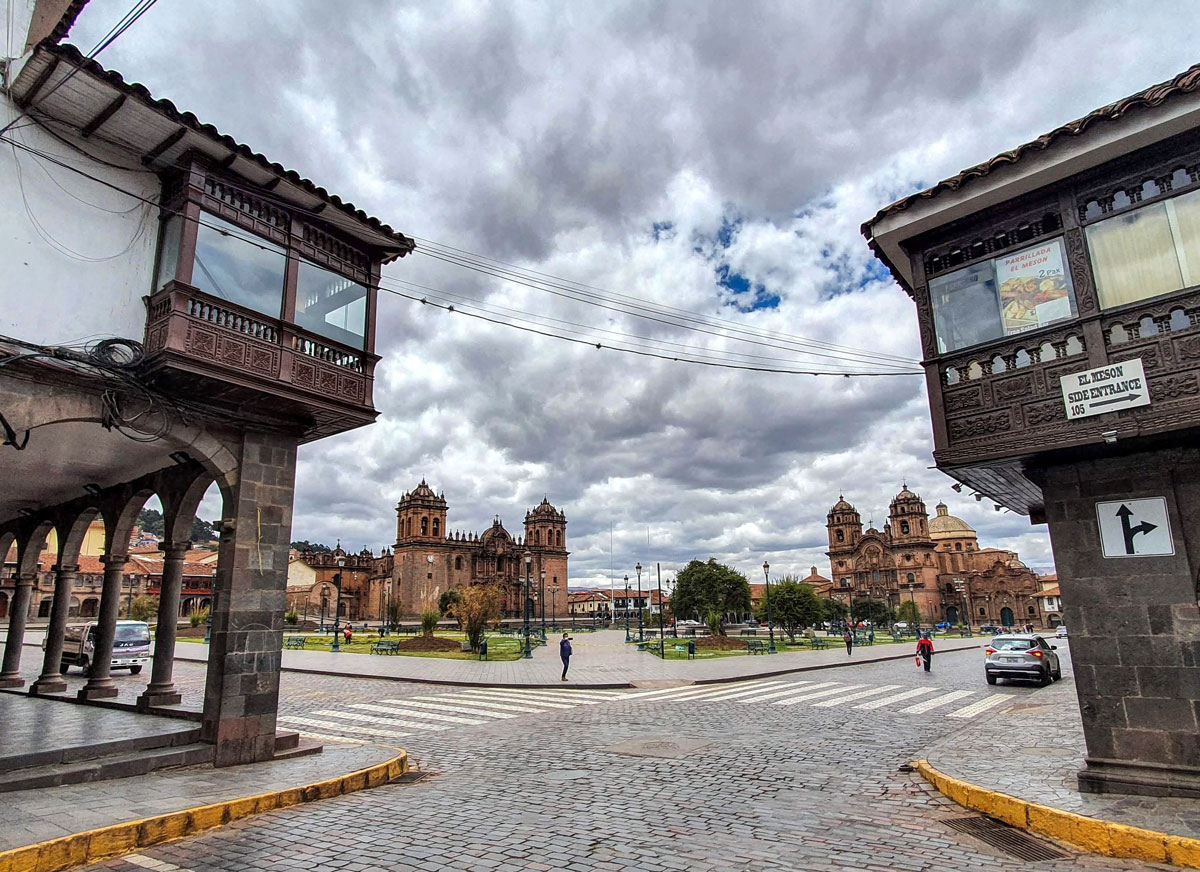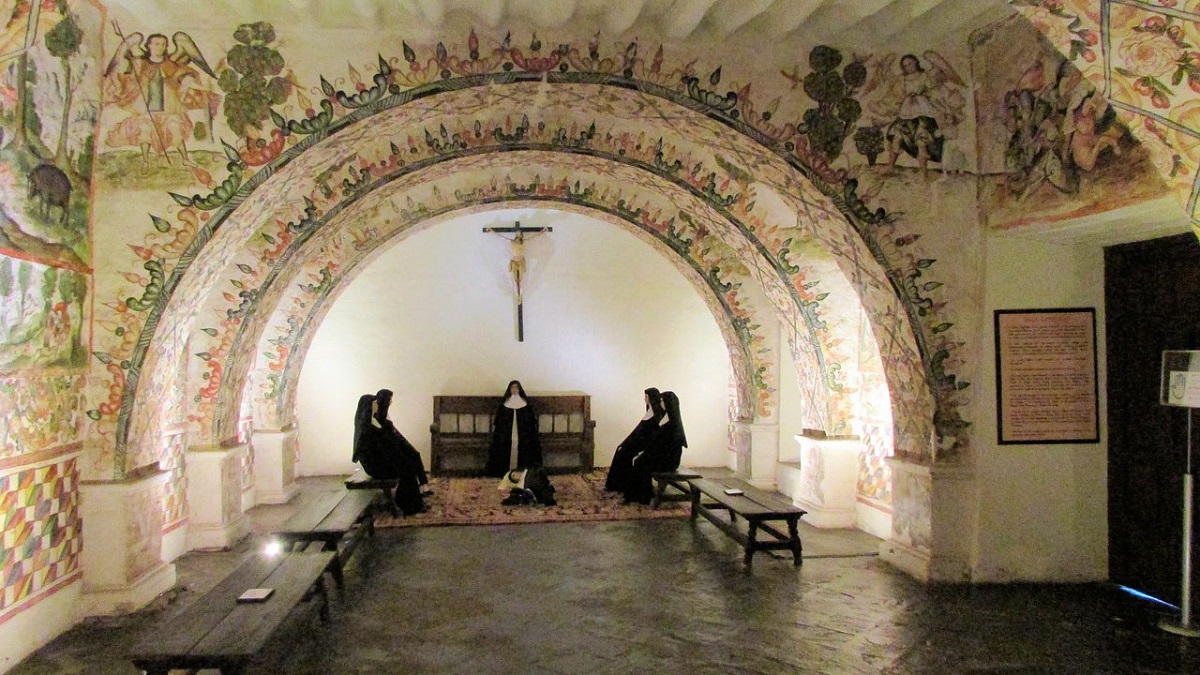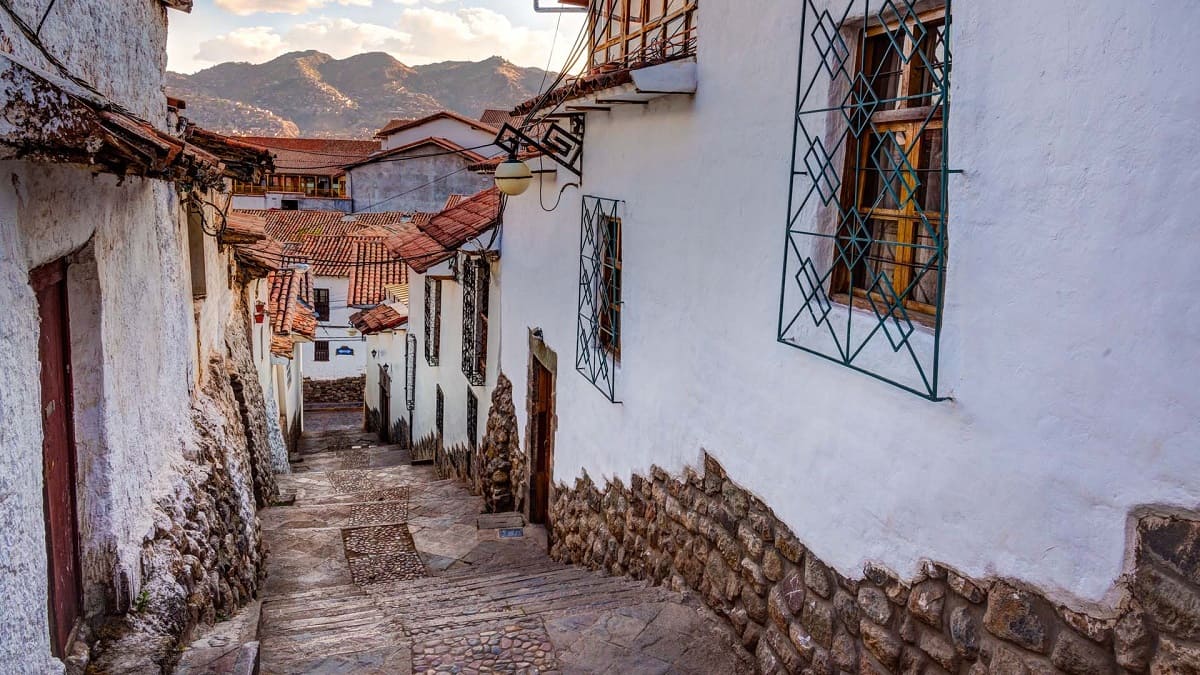
Cusco is a city that has many interesting things to visit and do. You can enjoy Peruvian cuisine, visit temples, contemplate its architecture, make horseback excursions, explore its squares, eat in its markets, shop and, of course, enjoy its most famous drink, the Pisco Sour, in some bar of the San Blas neighborhood. In addition, another good thing about the city of Cusco is that you can visit it walking. And you will also find nice lodging, at a good price and well located. We start?
In the heart of Cusco we find its "Plaza de Armas", which although it does not look like it was a swamp. Yes, as you read, before the Incas arrived in Cusco, the Main Square was a swamp that they dried up, bringing sand from the Peruvian coast. The Main Square of Cusco became the religious, administrative and cultural center of the Inca empire. Until the arrival of the Spaniards, who built temples and buildings in the surroundings, on the constructions of the Incas. Currently, here you can find the Cathedral, restaurants, shops, agencies to hire tours, etc.
Talking a little more about its history, when Manco Cápac arrived in the valley of Cusco, he settled in the surroundings of a swamp located between two streams because that place was free from the threats of the neighboring ethnic groups. He made his palace at the base of the plateau of Sacsayhuaman and the city was always erected around the swamp. Sinchi Roca, son and successor of Manco Capac dried the swamp with soil brought from the mountains and later Pachacutec was responsible for drying it completely covering the swamp with sand brought from the coast. During the Inca period, the main square was more extensive than the current "Plaza de Armas", because in addition to the current square (former Huacaypata) it occupied all the land of the current Regocijo Square (formerly cusipata), the "Hotel Cusco" and the stables located on the side of the middle street.Just these blocks and the middle street were crossed by a stream called Saphy (now covered and made sewer), which divided the square into its two already-known sectors.
This stream During the Incan Empire it was channeled throughout its urban route, and the part that crossed the square was covered as a tunnel. The current main square was the Northeast sector of the main square, with the Cusipata being the southwest sector. It was the religious and administrative center of the Incas. As well as being the main axis of the Inca road. Around the square were the Pachacútec, Huayna Capac and Viracocha Inca palaces. During the Inca period that was where most of the Inca festivals were celebrated, including Inti Raymi, Huarachicuy, the dance of Amaru, Capac Raymi, etc. It was also there where the main fairs were held and where the victories of the Inca army were celebrated.
When the Spaniards arrived in Cusco, they stayed in the Inca palaces around the plaza, then built colonial mansions, cathedrals, temples and chapels on the Inca palaces. In 1542, the chapter of the city of Cusco, Sebastián Garcilaso de la Vega Vargas (father of the chronicler Inca Garcilaso de la Vega) authorized the construction of mansions in the middle of the square. In this way, the Saphy stream was completely covered, the square was divided in three (Main Square, Regocijo Square, and Plazoleta de la Merced) to be divided by the new buildings (Hotel Cusco, Portal Comercio and Portal Espinar).
In 1545 the corregidor Polo de Ondergardo ordered the removal of the beach sand that was on the floor of the square for use in the construction of the Cathedral of Cusco.Currently theMain Square is located in the historic center of Cusco, and is surrounded by tourist restaurants, jewelry stores, travel agencies, tourist shops, etc. The two temples built around them are kept as such in the hours of worship, outside these hours are museums open to the public upon payment of the corresponding fees. Most of the buildings have some Inca walls in their foundations, however it is the colonial style that prevails.

If you like visiting museums, you are in luck. In Cusco you will find different museums where you will learn more about the Inca culture, about Peru, among others.The City of Cusco has a large number of museums that show evidence of the different cultures that were welcomed in this city; among them the most important in South America the Inca Culture that had as capital the City of Cusco, leaving thus a historical and cultural legacy that can be contemplated and experienced by locals and visitors.Now we will mention some of the most important:
It is known as the Archaeological Museum of Cusco, and has remains, objects and artifacts of the Inca Civilization, dating from the time of the Spanish conquest. It has many archaeological treasures among which are ceramics, textiles, jewelry, skulls and a unique collection of Inca vessels. And as in most museums where old remains are exhibited, photos are not allowed, but there is no problem, surely what you will see will be engraved in your memory. It is one of the most remarkable colonial houses of Cusco. Built at the beginning of the 17th century, with Inca stones, by the corregidor lieutenant Francisco Aldrete Maldonado, called the Admiral it was inhabited until his death in 1643. Reconstructed by Pedro Peralta de los Ríos after the 1650 earthquake and again restored by the University San Antonio Abad of Cusco after the earthquake of 1950.
Built at the beginning of the 17th century, it is a monastery built on the ruins of the Acllawasi, known as the "house of the chosen girls" or the "house of the virgins of the sun". This beautiful convent will not only surprise you with its architecture, but it also contains an amazing collection of art from the Andean culture and samples of Cusco art.The Santa Catalina Monastery was founded in 1601 in the city of Arequipa, but was soon transferred to Cusco because of a series of devastating natural disasters. The initiative of the foundation belonged to the widow Mrs. Lucia Rivera de Padilla, possessor of a great fortune. In February of 1605 the first 25 professed nuns arrived in Cusco.Currently the museum offers an exquisite colonial architecture that corresponds to the last stages of the Renaissance, with the presence of arches of Roman style. It has paintings from the Cusco school of the seventeenth and eighteenth centuries, huge tapestries from the colonial era and, most notably, the chapter house where you can admire the colorful colonial paintings.A guided tour will give you a more complete picture of the history of the museum and the objects it houses
Just a few steps from the Main Square of Cusco, is this fantastic religious museum that operates on the first floor of the main cloister. It has a valuable collection of canvases from the Cusqueña School that decorates its walls, represents the saints related to the order of Mercy and the redemption of Christian captives by the Moors. Some of these works are attributed to the Cusco teachers Basilio Santa Cruz and Ignacio Chacón. Stresses the series on the life of San Pedro Nolasco. This beautiful convent was rebuilt in 1680 after an earthquake, has beautiful murals about San Pedro Nolasco, founder of the Mercedaria order, also houses a small museum of religious art, which holds an incredible solid gold covered with stones precious, of incalculable value. the church has two entrance doors, the main one being the one facing the Espinar square, it also has a single belfry with a very Cusco baroque; today it has the title of Minor Basilica granted by Pope Pius XII in 1946. Also here the architects were Spanish but it was totally worked by Quechua alarifes; it has a wide main nave and two relatively narrow sides. Its main altar is neoclassical with six solid golden Corinthian columns and the image of the Virgen de las Mercedes in the central portion. It also has twelve other altars with different images and canvases, highlighting the Lord of Huanca and the Cruz del Padre Urraca. with embossed silver plates.

Santa Catalina Museum, Cusco
It is the most important temple in the times of the Inca civilization, known as the Temple of the Sun, Qoricancha in Quechua means courtyard of gold and this because before the invasion of the Spanish, in the whole temple you could find gold statues life-size, a huge gold solar disk, gold altars, and solid gold panels that covered the walls. The Incas worshiped the Sun, and when it illuminated the Qoricancha, the reflection represented the golden glory. At the time of the conquest, all the gold was taken from the temple, despite it is an archaeological site that deserves to be visited during your stay in Cusco. According to the Inca conception, the Qorikancha was the religious center of Cusco, geographical and political center. The temple of the Qorikancha, was the place where the Inti god (sun) paid homage to the maximum Inca god. "Qori" means gold worked and "Kancha" means enclosed place, limited by walls. The name of the place corresponds approximately to "fenced place containing gold".Here you can find the famous Temple of the Sun, Temple of the Moon, Temple of Venus and the stars ,The Temple of Illapa or Chuki Illapa and The Temple of K'uychi or Rainbow Temple.
The neighborhood of San Blas or the neighborhood of artisans of Cusco you have to know, it is a very bohemian neighborhood and is ideal to go for a drink at night to some of its picturesque restaurants or in the afternoon to visit some of its galleries art and craft stores.This neighborhood is full of slopes, so take it easy, but do not forget to visit it. The neighborhood of San Blas, formerly known as the artisans neighborhood, is now the heart of the Historic Center of Cusco, which still maintains its ancient state and its narrow streets are eager to tell us the innumerable secrets of the Imperial City. The square of the old Samble neighborhood keeps a great beauty and today it is shown as a surreal image, that lets glimpse the multiple races and cultures that surrender to its charm. A few blocks from the Plaza de Armas of Cusco is San Blas, former cradle of popular artisans recognized as the Mendívil, in addition, other families of craftsmen from San Blas, of equal prestige, including Olave and Mérida; they are followed by the Aguayo, Aguilar, Alvarez, Segovia, Saloma and Gutiérrez workshops, among others. But over the years, some things have changed, entering through the narrow and twisted streets, we can reveal some features recently acquired by this traditional neighborhood. At present there are family accommodations that are offered to tourists and allows them to share the well-known Andean hospitality and friendship, as well as their customs and meals. San Blas burns at night, say some tourists who have fallen surrendered to the mysteries of the stone streets and of course is the small bars where you can enjoy good music and get drunk with the company of people who come to the mythical city of Cusco from all over the world. Taking a walk around San Blas is a different experience, in a quiet and peaceful day, and at night a party of color, that dazzles and envelops us to the rhythm of the songs of the apus (Gods of the Incas). Everyone who visits Cusco, should go into the heart of the historic center, San Blas is a paradise made of stone and colonial houses trapped in time.

The Central Market of Cusco houses a large number of food stalls, with whole sections, dedicated exclusively to juices and fruit juices, snacks and prepared meals. If the weather is cold, one of the best options is the head broth (lamb), but if as usual, the sun shines, you can enjoy a delicious ceviche (raw fish marinated in lemon juice). Hidden among the aisles of the Mercado de San Pedro (in the fruit section) you can find stands with exotic products brought from the Amazon, herbal tinctures, and unguents based on the tallow of certain animals. Here you can buy coca leaves and prepare your own tea; "mate de coca" is one of the best natural remedies to combat altitude sickness. There is a row dedicated to chocolate, here you can find a mixture of delicious chocolate, coca leaves and mint (very delicious). It is not unusual for people coming from nearby provinces to come in typical costumes, carrying their babies on their backs in typical blankets, which would seem to be falling off, but you will see that this is not the case.
We hope this little blog has been of your liking and very useful for your next visit. Don´t forget what to visit in Cusco. You have many options.
Between April and August there is a dry season with warm temperatures in Peru. This time is considered the most popular time for Machu Picchu and is also best if you want to combine a visit Cusco city with a trekking tour. In addition, the high season offers incredible photo opportunities with bright blue skies. These advantages, of course, attract a large number of tourists. You should also keep in mind that the Inca Trail only allows a certain number of tourists, so book early!
September to March is the rainy season in Peru and a lot of rain is to be expected. It is therefore possible that some of the trekking routes are impassable. However, you will meet very few tourists at this time. What also makes the months of September and March so special is that Peru's flora and fauna can be seen in all their glory at this time. If you prefer it dry, you should definitely avoid the months of December to March.
Note: From February the Inca Trail tours will be closed for maintenance!
You don't want to visit Machu Picchu in the rainy season or with many others? Then the above months are just right for you. At this time the weather is more stable and it rains far less, but there are still far fewer tourists than in the high season. This is how Machu Picchu can be explored in a relaxed manner!
All trips to Machu Picchu usually start and end in the city of Cusco at 3460 m above sea level. M. Since Cusco is a good 1000 m higher than Machu Picchu, the average temperatures in Cusco are about 8 to 10 degrees lower than in Machu Picchu. The weather in Cusco is more stable than in Machu Picchu, that is, when it rains in Machu Picchu it can be sunny in Cusco, the opposite case is rather rare.
Similar to Machu Picchu, the best time to travel to Cusco is from March to November. From May to September there is a dry season in Cusco, rain is rather rare at this time of the year, but thunderstorms are always possible. During this time of the year, the day and night temperatures fall or rise sharply, during the day it can get well over 20 degrees warm in the sun. On nights when the sky is cloudless, temperatures often drop below zero at higher altitudes. Below you can find the top trips to Machu Picchu:
If the Inca Trail was not booked early enough to reserve a place in time, there are alternative trekking routes that offer a similar experience.
The Salkantay Trek tours, Lares Trek, Inca Quarry Trail and Inca Jungle Trek are recommended. All these tours end with a visit to Machu Picchu. Even last-minute hikers can find their tour on old Inca trails such as Choquequirao to Machu Picchu.